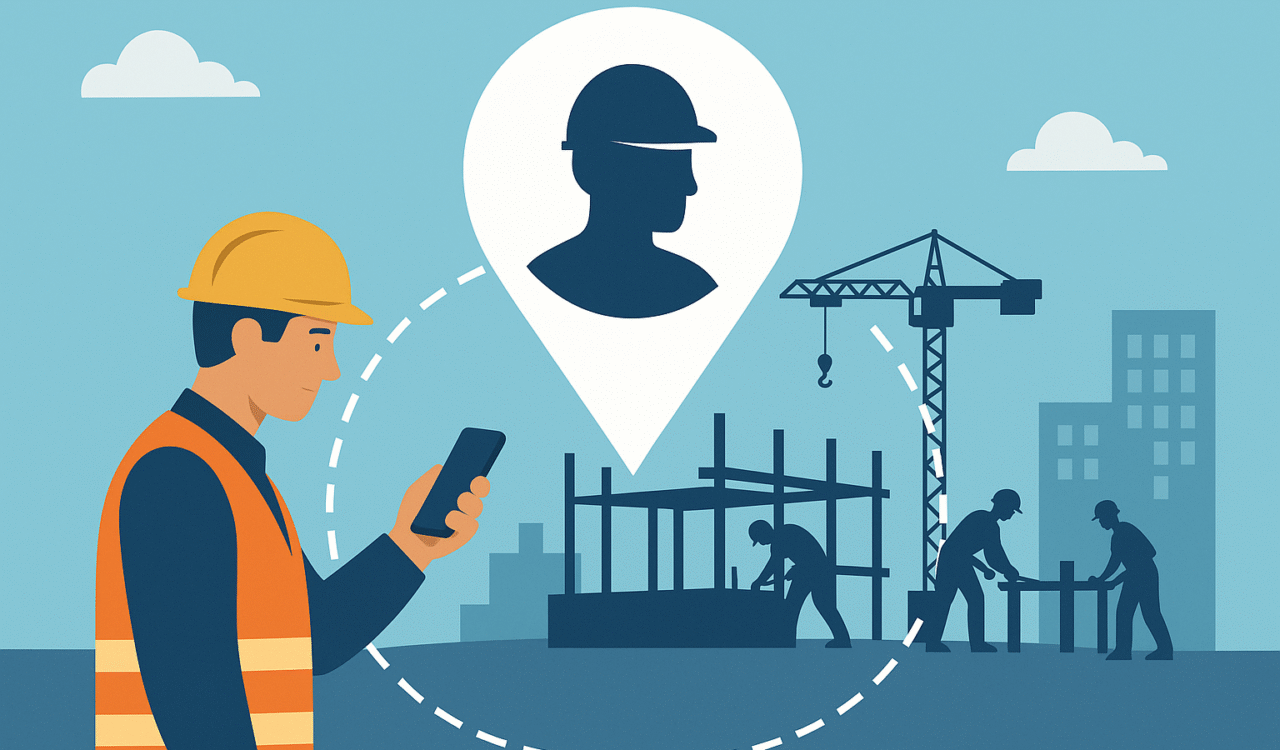Labor costs and schedules decide whether a construction project finishes on budget or runs over. Yet many managers still rely on weekly summaries or paper timesheets that arrive too late to prevent delays.
Accurate and timely construction productivity tracking changes that. By using digital time tracking to capture hours by task, trade, and location, contractors can see where every minute goes.
With this insight, managers can cut wasted travel, rebalance crews, and improve construction labor productivity before small issues become costly overruns.

What is Construction Field Productivity?
Construction field productivity measures how efficiently labor, equipment, and materials produce a unit of work such as square footage or a completed milestone. A common formula is:
Labor Productivity Rate (LPR) = Units of work completed ÷ Total labor hours
Tracking this metric allows managers to:
- Control labor costs
- Forecast schedules accurately
- Benchmark crews and tasks against historical performance
Projects with strong field productivity are more profitable because managers know exactly where time is spent and can adjust resources in real time.
Why Time Tracking Data Is Essential
Time tracking is not just for payroll. When captured accurately and analyzed daily, it becomes a decision making tool. Real time data helps you:
- Identify delays before they affect the schedule
- Balance workloads to prevent overtime and fatigue
- Improve job costing with precise task level labor data
- Benchmark crews and trades across multiple sites
The goal is to replace guesswork with clear evidence of how long each phase of work actually takes.
Methods to Improve Productivity in Construction Using Time Data
Digitize the Job Site
Mobile apps with GPS and geofencing record exact start and end times as workers enter or leave a site. Cloud platforms connect field and office teams so daily logs and schedule updates stay current.
Apply Lean Construction Principles
Lean methods such as the Last Planner System and Just In Time delivery reduce waste and rework. When paired with daily time data they highlight the root causes of delays and guide continuous improvement.
Monitor Labor in Real Time
Tracking attendance, idle time, and crew movement uncovers inefficiencies quickly. Geofence alerts can confirm worker presence and flag unexpected downtime.
Optimize Equipment Use
Telematics data on fuel use, engine hours, and location helps prevent underuse or misuse of heavy equipment and supports preventive maintenance.
Productivity Tracking Metrics for Construction
Focus on key performance indicators that link hours to output and cost:
| Metric | What it Shows | Action |
| Labor Productivity Rate (LPR) | Work units per labor hour | Benchmark crews and set realistic bids |
| Planned vs Earned Value | Actual progress compared to plan | Adjust resources or timelines |
| Percent Plan Complete (PPC) | Percent of tasks finished on schedule | Measure scheduling reliability |
| Daily Output per Trade | Productivity by discipline | Identify top performing teams |
| Technician Utilization | Percent of time spent on billable tasks | Reduce travel and idle time |
| Average Travel Time | Non productive hours | Optimize routes and staging |
| Overtime Percentage | Excess hours worked | Rebalance workloads to prevent burnout |
These metrics provide a clear picture of site performance and show where targeted changes will yield the greatest gains.
Turning Time Data Into Action
Identify bottlenecks
Compare planned versus actual durations for each task. If certain phases consistently overrun, adjust crew size, provide training, or revise the workflow.
Optimize scheduling and resource allocation
Use historical time data to size crews accurately and plan shifts such as a 2 2 3 schedule that balances workload and reduces fatigue.
Prevent overwork
Set automatic alerts for approaching overtime so managers can reassign tasks before fatigue affects safety and quality.
Enhance accountability
Shared dashboards help crews understand how performance is measured and give supervisors objective data for feedback and recognition.
Improve job costing and profitability
Accurate time data flows directly into job costing and payroll, protecting margins and improving future estimates.
Common Challenges and How to Overcome Them
| Challenge | Solution |
| Fragmented data | Choose a platform that integrates payroll, ERP, and project management systems to create a single source of truth |
| Resistance to change | Provide training and show crews how accurate time tracking ensures fair pay and better scheduling |
| Environmental uncertainty | Combine real time alerts with weather and logistics data to adjust plans quickly |
| Inconsistent data entry | Automate clock ins with geofencing and mobile reminders to reduce human error |
Quick Start Plan for Contractors
Week 1 – Setup
Select a time tracking platform such as allGeo, define key KPIs, and train supervisors and crews.
Week 2 – Baseline
Launch geofenced time clocks and daily reports. Establish exception alerts for overtime and missed check ins.
Week 3 – Analyze
Review dashboards to identify the top three delays. Adjust crew assignments or material staging.
Week 4 – Improve
Hold a weekly plan versus actual review. Recognize high performing crews and document lessons learned for future bids.
Frequently Asked Questions
How does time tracking improve construction labor productivity
Accurate time tracking shows exactly how many hours each task or trade requires. Managers can identify delays, rebalance crews, and plan schedules based on real performance data, which leads to higher output per labor hour.
What is construction productivity tracking?
Construction productivity tracking is the process of measuring the work completed compared to the time and resources used. It combines time logs, location data, and task progress to reveal how efficiently crews are working.
Which metrics are most important for tracking labor productivity?
Key metrics include Labor Productivity Rate (work units per labor hour), Planned versus Earned Value, Percent Plan Complete, technician utilization, average travel time, and overtime percentage. Tracking these indicators highlights bottlenecks and guides scheduling decisions.
Can time tracking data help with job costing and payroll?
Yes. Detailed time data feeds directly into job costing systems and payroll. This ensures that labor charges are accurate, prevents cost overruns, and supports better bidding on future projects.
How quickly can a construction company see results from time tracking?
Many contractors report noticeable improvements in crew utilization, schedule adherence, and labor cost control within the first few weeks of consistent tracking and weekly review of plan versus actual performance.
Conclusion
Improving labor productivity in construction begins with accurate and timely time tracking. Capturing real time hours by task and location gives managers the visibility to reduce waste, balance workloads, and protect profit margins. Whether you manage a small crew or multiple large projects, the right platform turns time data into action.
Start by tracking a few key metrics, act on the insights each week, and watch productivity rise across every job site.
Next step: Start a free trial of allGeo or schedule a demo to see how you can boost labor productivity on your next project.


